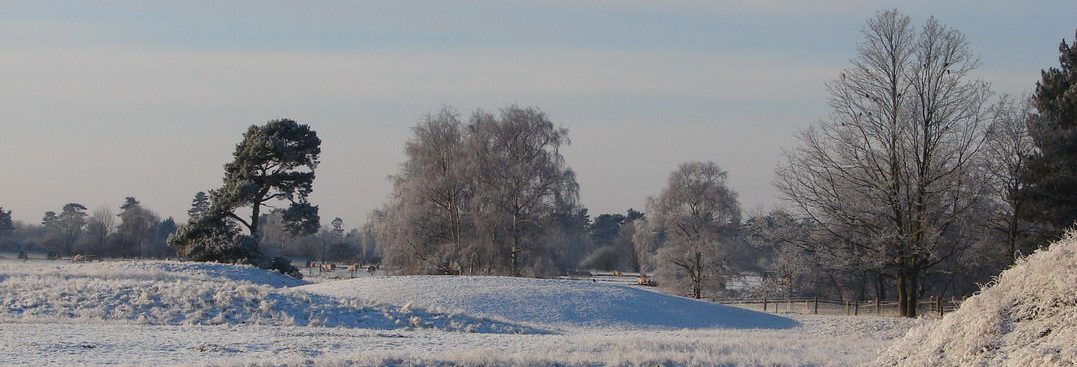The Royal Helm
In the burial chamber, the king’s helm had been placed to the left of his head. All that was left after thirteen centuries were rusted fragments, as seems to be anticipated in the elegiac “Lay of the Last Survivor” from Beowulf .
Sceal se hearda helm (hyr)stedgolde
Shall the hard helm, decked with gold,
fætum befeallen; feormynd swefað,
[its] plates befall; [the] burnishers sleep,
þa ðe beadogriman bywan sceoldon…
they who [the] battle-masks should prepare…
(ll.2255-2257: my translation)
With its impressive decorated face-plate, the Sutton Hoo helm can be aptly described as a beadugrima ‘battle mask’. Attempting to reconstruct it from the surviving fragments was not unlike trying to do a three-dimensional jigsaw puzzle without all the pieces or its box-lid picture. Dr Rupert Bruce-Mitford and his team of specialists at the British Museum were, however, eventually able to achieve this, as seen below.
The reconstructed Royal Helm (British Museum).
The helm is made from a crested iron cap with full face mask, cheek guards and a neck guard behind. Either end of the eyebrow-pieces of the helm’s face are the protective boar’s heads, just as they are located in the description of helms in Beowulf, ll.303b-306a (for a discussion of this and related passages of the epic, see pp.39-43 of my book).
Although a fully functional fighting helm, it is adorned all over with gilt and tinned bronze plates embossed with various designs. It also also decorated with garnet inlays under the eyebrow pieces and is obviously of great ceremonial importance.
It seems likely that at this stage in the development of English kingship, before crowns became the essential royal headgear, this type of highly adorned, full-faced helmet, or beadugrima ‘battle mask’, signaled that its wearer was the king. In this sense, the face can be identified as that of the ancestral founding father-god, Woden. A clearer picture of the majesty of this helm can be seen in the replica made in the Armoury of the Tower of London.
The replica of the Royal Helm (British Museum).
© Copyright Dr Sam Newton, Blotmonaþ AD 2000


